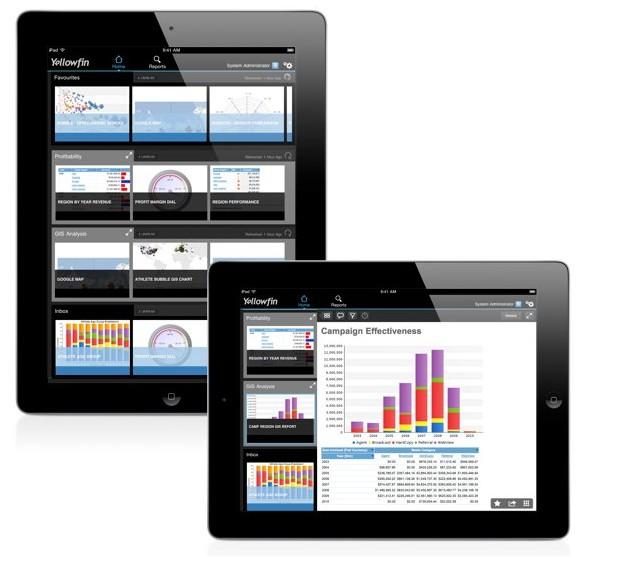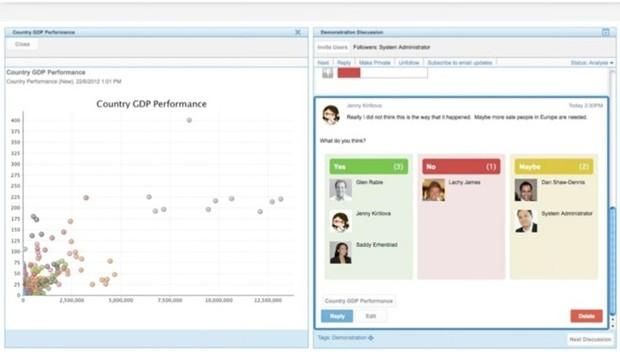The BI market’s not understated, but it is set to explode
When you’re asked to respond to another’s comments, images of some sort of adversarial skirmish abound the brain – or at least that’s the milieu my mind conjures.
So, when Brittany Richards, of enterprise software forum softwareadvice.com, asked me to respond to ERP analyst Michael Koploy’s article Is the BI Market Opportunity Understated?, I dusted-off my sparring gear.

After reading his carefully considered argument for the future proliferation of Business Intelligence (BI) technologies, I sheepishly removed my helmet and sword. He’s right. The BI market, while already experiencing rapid growth, is indeed on the verge of exploding – both in terms of adoption and the number of potential users. However, the opportunity that reporting and analytics applications represent isn’t understated. It’s well known, and the next few years will see organizations move from BI consideration to implementation.
Converting interest and action into more action
BI and analytics have deposed cloud computing as top enterprise technology priority for 2012 –2013 according to Gartner’s latest annual top 10 CIO strategic technology priorities survey.
Additionally, The Corporate IT Forum’s annual survey on corporate IT strategies flagged more positive developments for the BI market over the ensuing 12 months. The study, compiled via responses garnered from almost 700 IT professionals between October and November 2011, revealed a 10.7 percent rise in the number or survey participants planning to implement a BI strategy in the coming year. In addition, 45.8 percent of respondents indicated that they already have a BI strategy in place, while a TEKsystems survey revealed that 44 percent of IT leaders were implementing, or planning to implement, BI initiatives in 2012. CIO Magazine put that figure at 53 percent.
A new survey from consultancy firm, MorganFranklin, found that 75 percent of respondents intended to increase or maintain BI spending during 2012.
And, TechTarget’s 2012 IT Priorities Survey – which polled more than 2,600 IT professionals and business analysts in a mix of job positions – found that 50 percent of those surveyed planned on increasing BI spending by 10 percent or more over the next year.
A recent SnapLogic survey, of more than 110 CIOs, found that pursuing, expanding and implementing BI / analytics initiatives will remain the most popularly listed number one priority in 2012 (39%).
InformationWeek’s Outlook 2012 survey of 605 North American technology professionals indicated that BI would remain high on the 2012 agenda, with 60 percent of respondents stating that they consider the ability to perform timely analysis on sales and operational data as important. A further 54 percent agreed that mining customer data was important.
Substantial market growth predicted
Complementing those adoption plans and sentiments towards BI and analytics, are BI sales and revenue predictions.
Gartner has forecast global BI revenue to reach $13 billion by the conclusion of 2012, and IDC has predicted that BI software sales will grow 8.6 percent on last year.
It seems that while BI has proved a priority in 2012, with increases in sales and revenue reflecting that fact, the analytics market is caught-up in broader spending trends. Gartner projects total enterprise application software spending to increase nearly five percent over 2011 to $120.4 billion. In fact, worldwide IT spending will grow 6.9 percent to $1.8 trillion by the conclusion of 2012, according to IDC.
So not only do organizations realize the opportunity that BI presents, so do analysts – and projected market growth rates reflect that. Analyst firm Forrester Research even claims that BI is the largest planned IT investment area over the next three years.
But are BI benefits understated?
These facts and figures are fine, but what about the benefits you ask? Do people understand the potential benefits of analytical applications, such as BI? In short; yes, yes they do.
Nucleus Research encapsulated the understanding and publication of the enormous potential paybacks of BI in recent research. According to a study released by the firm in March 2012, organizations earn an average of $10.66 for every dollar spent on analytics – an ROI in excess of 1000 percent.
“Although skepticism can be warranted for technologies that are new or unproven, managers who continue to balk at investing in analytics technologies are doing their organizations a disservice,” stated the report. “The companies that use analytics to learn more about their customers, products, and costs will be in a position to cost effectively grow their business at the expense of rivals.”
BI presents an enormous opportunity to improve organization effectiveness and efficiency by supporting better, faster and smarter fact-based decision-making and competitive advantage. But that opportunity is not inconspicuous or understated. However, there are many notable factors driving and facilitating BI market growth.
Factors driving and facilitating BI market growth
There are a significant number of tangible or definable trends, factors or developments that have (and are) attributed to growing interest and adoption of BI technologies. This list is by no means definitive or exhaustive, but includes:
- The consumerization of BI: Players from both side of the proverbial fence in the BI marketplace will work hard to consolidate the most notable and overarching trend to affect the software segment since its inception – ease-of-use. Why? Because organizations have realized the value in equipping non-technical employees and business areas outside IT with ‘self-serve’ reporting and analytics and, naturally, vendors are-all-too-keen to tap into that vastly expanded potential customer base.
- Ease of implementation: But ease-of-use doesn’t merely relate to product usability.
Sixty-three percent of respondents to the same Information Management survey listed “ease of implementation” as their first choice when asked to identify “the most important features to look for when purchasing a BI product or selecting [a] vendor”. The bottom line? It just has to be easy. And vendors are responding to that demand with flexible, scalable, single-integrated and 100 percent Web-based BI solutions.
- Mobility: The explosion in popularity of mobile applications and computing for business-based functions has also led to the swift rise of Mobile BI – the ability to access and interact with reporting and analytics via mobile devices. The ability for this phenomenon to increase the potential user base for BI is obvious, with field service personnel and always-travelling executives (just to name a few) now able to benefit from BI anywhere, anytime.

And again, InformationWeek’s 2012 Business Intelligence, Analytics, and Information Management Survey disclosed that 44 percent of respondents plan to add mobile analytics capabilities, via smartphones or tablets, to their data strategies this year.
- Cloud-based BI stimulates SMB adoption: The ongoing emergence of cloud-based BI will continue to reduce barriers to entry for small-to-midsized-businesses (SMBs). InformationWeek’s 2012 BI and Information Management Trends Report underlines the appeal of SaaS-based BI for SMBs, with respondents listing “low overall cost” (55 %) and “low initial cost” (39 %) as two of the biggest attractors.

IDC research indicates that the SaaS BI market will experience between double and triple the growth of the overall market, expanding at a compound annual growth rate of 22.4 percent through to 2013.
- Beyond dashboards – Collaborative BI: Data visualization, presented via personalized dashboards, remains one of the most fundamental ways to deliver customized BI content to end-users. Collaborative BI – the integration of the information sharing features and functionality of popular Web 2.0 technologies and social media platforms within a BI platform – is becoming more common place, allowing more people to effectively share, discuss and make collective decisions with data.

Gartner predicts that by 2013, 15 percent of BI deployments will combine traditional BI and collaboration components in a singular decision-making environment.
- Embedded BI: Software vendors and organizations from across almost all major industries are beginning to embed analytical capabilities in their core applications and processes, opening up entire new ecosystems of potential BI users.

Where to next?
The BI market is growing sharply and quickly. What other factors do you think are contributing to BI growth – both in terms of BI adoption and BI’s potential user base?



